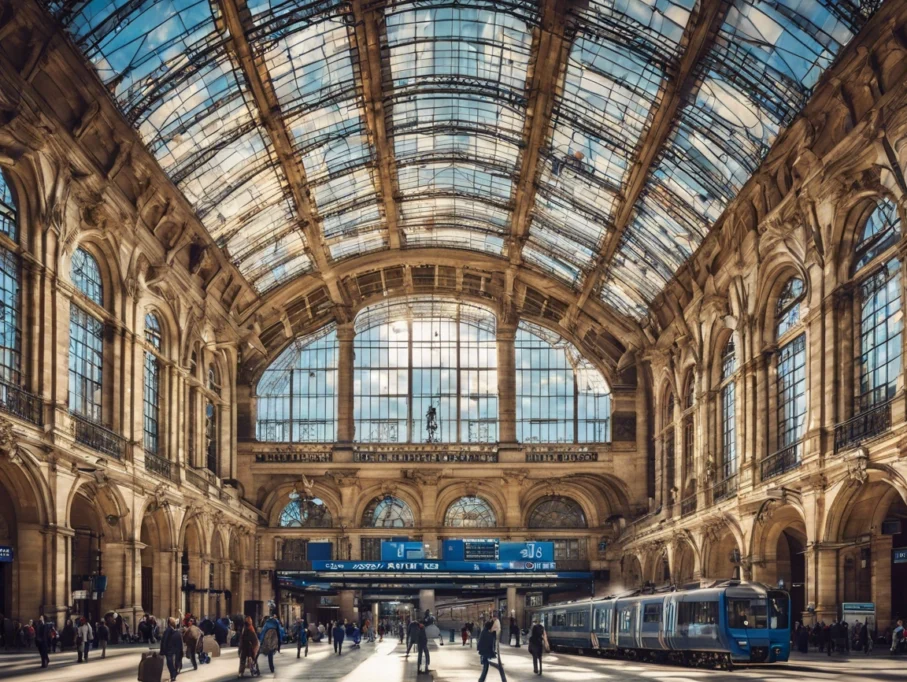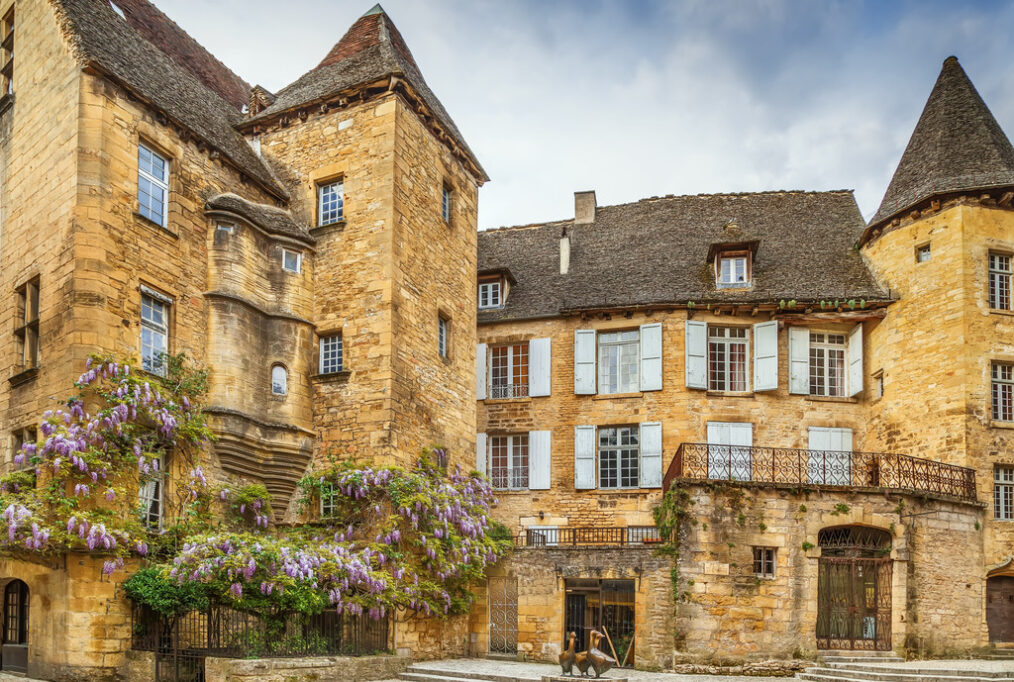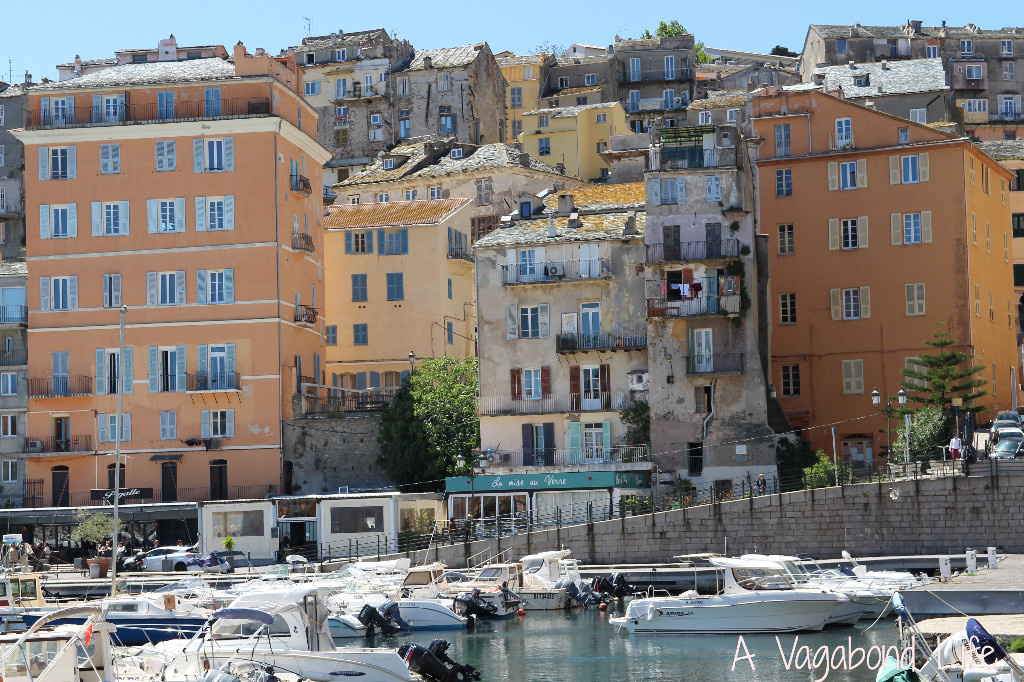Provence - Alpes - Cote d’Azur France Travel Guide - A Vagabond Life
Welcome to the enchanting region of Provence-Alpes-Côte d’Azur, a captivating destination nestled in the southeastern corner of France. With its picturesque landscapes, rich cultural heritage, and delightful Mediterranean climate, this region offers an unforgettable travel experience.
Explore the charming villages adorned with vibrant lavender fields, wander through bustling markets filled with fresh produce and local crafts, and indulge in the region’s renowned cuisine bursting with flavors of olive oil, herbs, and seafood. Discover the artistic legacy of renowned painters like Van Gogh and Cézanne, who found inspiration in the region’s stunning landscapes.
Venture into the rugged beauty of the Alpes mountains for exhilarating outdoor activities such as hiking, skiing, and paragliding. Then, immerse yourself in the glamour of the Côte d’Azur, where sparkling azure waters meet glamorous cities like Nice, Cannes, and Saint-Tropez, offering luxurious beaches, chic boutiques, and vibrant nightlife.
Provence-Alpes-Côte d’Azur beckons with its blend of natural beauty, cultural richness, and sophistication, promising an unforgettable journey for every traveler.
Provence - Alpes - Cote d’Azur France Map
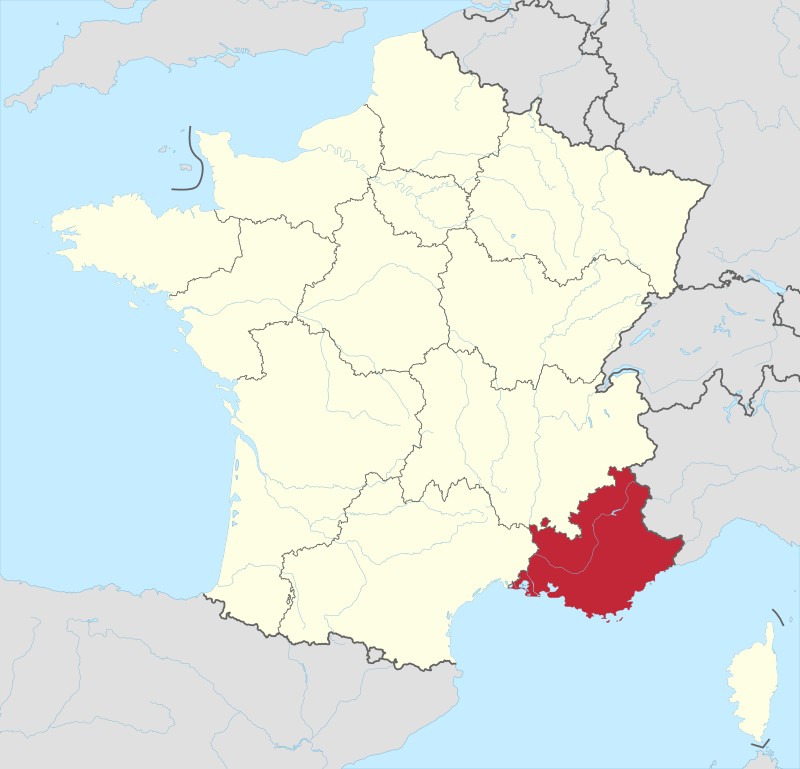
Top 5 Things To See & Do In Provence - Alpes - Cote d’Azur France
avignon
orange
Saint Paul de Vence
NICE
THE CAMARGUE
Provence - Alpes - Cote d’Azur France Snapshot
Geography and Beauty
Provence-Alpes-Côte d’Azur, located in southeastern France, is renowned for its diverse and stunning landscapes. The region stretches from the Mediterranean coastline to the mountainous terrain of the Alps. The coastline, known as the French Riviera or Côte d’Azur, features beautiful beaches, glamorous resorts, and charming coastal towns. Inland, the landscape transitions into rolling vineyards, lavender fields, and rugged hills. The Verdon Gorge, one of Europe’s largest canyons, offers dramatic scenery and outdoor adventure. The region’s natural beauty is further enhanced by the Luberon Mountains and the Alpilles, offering picturesque villages and lush landscapes that change with the seasons.
History and Cultural Heritage
The history of Provence-Alpes-Côte d’Azur is rich and varied, influenced by its strategic location. The region was settled by the Greeks and Romans, evident in its numerous ancient ruins. Avignon is famous for the medieval Palace of the Popes, while Arles boasts well-preserved Roman monuments. The Alpes-de-Haute-Provence region features prehistoric sites and ancient Roman roads. The region has been a cultural hub, attracting artists such as Vincent Van Gogh and Paul Cézanne, whose works reflect the vibrant landscapes. Festivals, such as the Cannes Film Festival and Festival d’Avignon, highlight the region’s contemporary cultural scene.
Food and Wine
The cuisine of Provence-Alpes-Côte d’Azur is as diverse as its landscape. The region is celebrated for its Mediterranean diet, featuring fresh seafood, aromatic herbs, and locally grown produce. Bouillabaisse, a traditional fish stew from Marseille, and ratatouille, a vegetable medley from Nice, are iconic dishes. Provençal herbs like thyme, rosemary, and basil infuse the cuisine with distinctive flavors. The region is also known for its excellent wines, including Côtes de Provence rosés, Châteauneuf-du-Pape reds, and Bandol wines. Olive oil, lavender honey, and local cheeses, such as Banon, are also notable culinary delights.
Best Time to Visit
The best time to visit Provence-Alpes-Côte d’Azur depends on your interests. Spring (April to June) offers mild temperatures, blooming flowers, and fewer tourists, making it ideal for exploring towns and countryside. Summer (July to August) is perfect for enjoying the Mediterranean beaches, vibrant festivals, and outdoor activities but can be crowded and hot, especially in the cities. Autumn (September to October) provides pleasant weather, harvest festivals, and the beautiful fall colors of vineyards and forests. Winter (November to March) is less crowded and offers opportunities for skiing in the Alps, though some coastal resorts may be quieter during this time.
Things To See and Do In Provence - Alpes - Cote d’Azur
Provence, located in the southeastern part of France, is one of the country’s most beloved regions. Renowned for its stunning landscapes, ancient towns, and rich history, Provence offers a blend of picturesque scenery, cultural heritage, and delightful local experiences. The region is famed for its beautiful coastlines, charming villages, and historical landmarks that date back to Roman times.
Aix-en-Provence
Founded by the Romans in 123 BC, Aix-en-Provence is a historic town with a rich tapestry of architecture and culture. The town’s winding streets are lined with elegant houses and lively markets. At the heart of Aix-en-Provence is the Cathedral of St. Sauveur, built on the site of a Roman forum and an earlier basilica. The cathedral showcases a mix of architectural styles spanning from the 5th to the 17th centuries, reflecting the town’s evolution over time. Additionally, Aix-en-Provence is known for its vibrant cultural scene, charming squares, and thermal baths.
Arles
Arles, once a prominent Roman city, boasts a remarkable collection of Roman monuments that have earned it a UNESCO World Heritage designation. The town’s ancient theater, amphitheater, and the Roman baths stand as testaments to its historical significance. Arles serves as the gateway to the Camargue region, known for its unique wetlands and diverse wildlife. The town also celebrates its artistic heritage with various festivals and events throughout the year.
Avignon
Avignon is renowned for its well-preserved medieval architecture and historical significance. The old city, encircled by intact medieval walls, is a UNESCO World Heritage site. Key highlights include the Palace of the Popes, a formidable fortress that served as the papal residence in the 14th century, and the Pont Saint-Bénezet, also known as the Pont d’Avignon, a bridge partially destroyed by floods and left as a historical monument. The Calvet Museum houses an impressive collection of fine arts, offering insights into the region’s artistic legacy.
Briançon
Briançon, situated in the Hautes Alpes department, holds the title of the highest town in the European Union. The town is renowned for its fortified ramparts, designed by the esteemed military engineer Vauban. These fortifications, which encircle the old town, reflect Briançon’s strategic importance in alpine defense. The town’s high altitude offers breathtaking views of the surrounding mountains and a range of outdoor activities, including skiing and hiking.
The Camargue
The Camargue is a vast wetland and nature reserve located in the Rhône Delta. Covering 930 square kilometers, it is Western Europe’s largest river delta and a haven for biodiversity. The region is famous for its wild Camargue Horses and Camargue Bulls, as well as its extensive birdlife, including the iconic Pink Flamingos. The Camargue offers scenic landscapes, unique flora and fauna, and opportunities for outdoor activities such as birdwatching and horseback riding.
Fontaine-de-Vaucluse
Fontaine-de-Vaucluse is home to the fifth-largest spring in the world, known for its dramatic emergence from a cliff. The Sorgue River, which begins at this spring, flows through the picturesque village, creating a striking natural feature. Visitors can explore the surrounding landscapes, enjoy boat rides, and visit the local caves that reveal the source of this impressive water spring.
Gordes
Perched on the foothills of the Monts de Vaucluse, Gordes is a quintessential hilltop village renowned for its beauty and charm. The village’s white stone houses and buildings seem to cling to the mountainside, offering stunning views of the Luberon region. Gordes is celebrated for its well-preserved medieval architecture, quaint streets, and vibrant local markets.
Marseille
As France’s oldest city, Marseille boasts a rich history that dates back over a million years. The city’s port, the Old Port or Vieux-Port, has been a vital maritime hub for centuries. Notable landmarks include the Abbaye Saint-Victor and the Fort Saint-Jean, which stand guard over the harbor. The Château d’If, situated on a small island in the bay, was originally a defensive fortress and later became a notorious prison. Marseille’s diverse culture, historic sites, and dynamic atmosphere make it a fascinating destination.
Orange
Founded by the Romans in 35 BC, Orange is famed for its remarkable Roman heritage. The Roman Theater, still in use today, and the Triumphal Arch of Orange, thought to date from the time of Augustus or Tiberius, are highlights of the city’s historical legacy. These well-preserved structures offer a glimpse into the grandeur of Roman architecture and entertainment.
Pont du Gard
The Pont du Gard is an ancient Roman aqueduct that spans the Gardon River. Part of the larger Nîmes aqueduct system, this engineering marvel was constructed in the 1st century AD to transport water from Uzès to Nemausus (modern-day Nîmes). The aqueduct’s impressive three-tiered structure is a testament to Roman ingenuity and is listed as a UNESCO World Heritage Site.
Saint-Rémy-de-Provence
Saint-Rémy-de-Provence is a walled city with a wealth of Roman remains, including the ancient Glanum ruins. The town is notable for its connections to historical figures such as Nostradamus, the renowned prophet and physician born here. The Asylum of Saint-Paul-de-Mausole is famously associated with Vincent Van Gogh, who produced some of his most celebrated works, including “Starry Night”, during his time at the asylum. The town’s historical significance and artistic heritage add to its allure as a cultural destination.
Things To See and Do In Cote d'Azur
The Côte d’Azur, also known as the French Riviera, is a glamorous stretch of Mediterranean coastline in southeastern France. Though the exact boundaries are fluid, it is generally considered to extend from the Italian border in the east to Saint-Tropez, Hyères, Toulon, or Cassis in the west. Renowned for its stunning landscapes, luxurious lifestyle, and rich history, the French Riviera continues to captivate visitors from around the world.
Nice
Nice is not only the capital of the Alpes-Maritimes department but also the second-largest city in the Provence-Alpes-Côte d’Azur region. Its history stretches back to ancient times, with archaeological sites like Terra Amata revealing evidence of early human habitation and the use of fire. Founded by the Greeks around 350 BC as Nikaia, named after the goddess Nike, Nice’s strategic port and location made it a vital maritime power. The city became a favored winter destination for British aristocrats in the 19th century, leading to the creation of the iconic Promenade des Anglais. Today, Nice offers a blend of historical charm and modern amenities. Key attractions include:
- Promenade des Anglais: This famous seaside boulevard stretches along the Baie des Anges and is perfect for a leisurely stroll or bike ride.
- Matisse Museum: Located in the Cimiez neighborhood, this museum houses an extensive collection of Henri Matisse’s works, set in a beautiful 17th-century villa.
- Chagall Museum: Showcasing Marc Chagall’s biblical paintings, this museum is set in a tranquil garden and offers insight into the artist’s spiritual and artistic vision.
- Old Town (Vieux Nice): A maze of narrow streets filled with colorful buildings, vibrant markets, and charming cafes. The bustling flower market is a highlight.
- Castle Hill (Colline du Château): Offering panoramic views of Nice, this site features ruins of a medieval castle and lush gardens.
Antibes
Founded by the Greeks in the 5th century BC, Antibes quickly became an important trading colony thanks to its protected harbor. The Romans, who settled around 43 BC, left a significant architectural legacy, including amphitheaters and aqueducts. The medieval Château Grimaldi, built in the 10th century, now serves as the Pablo Picasso Museum. Picasso lived in Antibes in the early 20th century, and his work is prominently displayed here. Antibes also boasts:
- Antibes Old Town: A charming area with narrow streets, bustling markets, and traditional Provençal shops.
- Port Vauban: One of the largest pleasure boat harbors in Europe, where luxury yachts and historical ships are docked.
- Cap d’Antibes: A scenic peninsula offering beautiful coastal walks and exclusive residential areas.
Cannes
Globally renowned for its annual Film Festival, Cannes is synonymous with glamour and luxury. This vibrant city is a hotspot for celebrities and filmmakers. The Film Festival, held each May, attracts international attention and features red-carpet events, screenings, and parties. Cannes also offers:
- La Croisette: The city’s famous boulevard lined with luxury hotels, designer boutiques, and elegant cafes.
- Palais des Festivals et des Congrès: The venue for the Cannes Film Festival, an architectural landmark with an iconic red carpet.
- Le Suquet: The old quarter of Cannes, offering narrow streets, historic buildings, and stunning views of the city from its hilltop.
Grasse
Often referred to as the world’s perfume capital, Grasse has been a center of fragrance production since the 17th century. The town is home to numerous perfume houses that continue the tradition of crafting exquisite scents. Grasse also holds the title of Ville d’Art et d’Histoire, reflecting its rich cultural heritage. Notable sites include:
- Perfume Factories: Visitors can tour historic and contemporary perfume factories to see the production process and create their own scents.
- Musée International de la Parfumerie: This museum offers an in-depth look at the history and art of perfumery, with extensive collections of bottles and fragrance artifacts.
- Old Town (Vieille Ville): Explore charming streets filled with local shops, cafes, and historical buildings.
Saint-Jean-Cap-Ferrat
A picturesque peninsula just east of Nice, Saint-Jean-Cap-Ferrat is known for its exclusive residences and stunning natural beauty. The area is home to some of the world’s most luxurious real estate. Key attractions include:
- Villa Ephrussi de Rothschild: An exquisite Italianate villa surrounded by magnificent gardens overlooking the sea. The villa is known for its opulent interiors and diverse themed gardens.
- Cap-Ferrat Coastal Path: A scenic walking trail that offers breathtaking views of the Mediterranean and the coastline.
Saint-Paul-de-Vence
One of the oldest medieval walled towns in the French Riviera, Saint-Paul-de-Vence is renowned for its artistic and cultural scene. The town’s medieval charm and elevated position offer stunning views of the surrounding countryside. Highlights include:
- Fondation Maeght: A modern art foundation showcasing works by artists like Miro, Chagall, and Calder in a unique architectural setting.
- Medieval Ramparts: Walk along the historic ramparts that offer panoramic views of the town and the landscape beyond.
- Art Galleries and Studios: The town is dotted with galleries and studios, reflecting its status as a haven for artists and musicians.
Saint-Tropez
Originally a 15th-century military stronghold, Saint-Tropez has evolved into a glamorous playground for the rich and famous. Its transformation began in the mid-20th century and continues to attract celebrities, fashion icons, and wealthy visitors. Key attractions include:
- Port of Saint-Tropez: A bustling harbor filled with luxury yachts, cafes, and shops.
- La Ponche: The old fishing district of Saint-Tropez with narrow streets and charming buildings.
- Citadel of Saint-Tropez: A historic fortress offering panoramic views of the city and the sea.
Each of these destinations contributes to the Côte d’Azur’s reputation as a premier destination for luxury, culture, and natural beauty.
France Travel Guides
Regions Of France Travel Guides
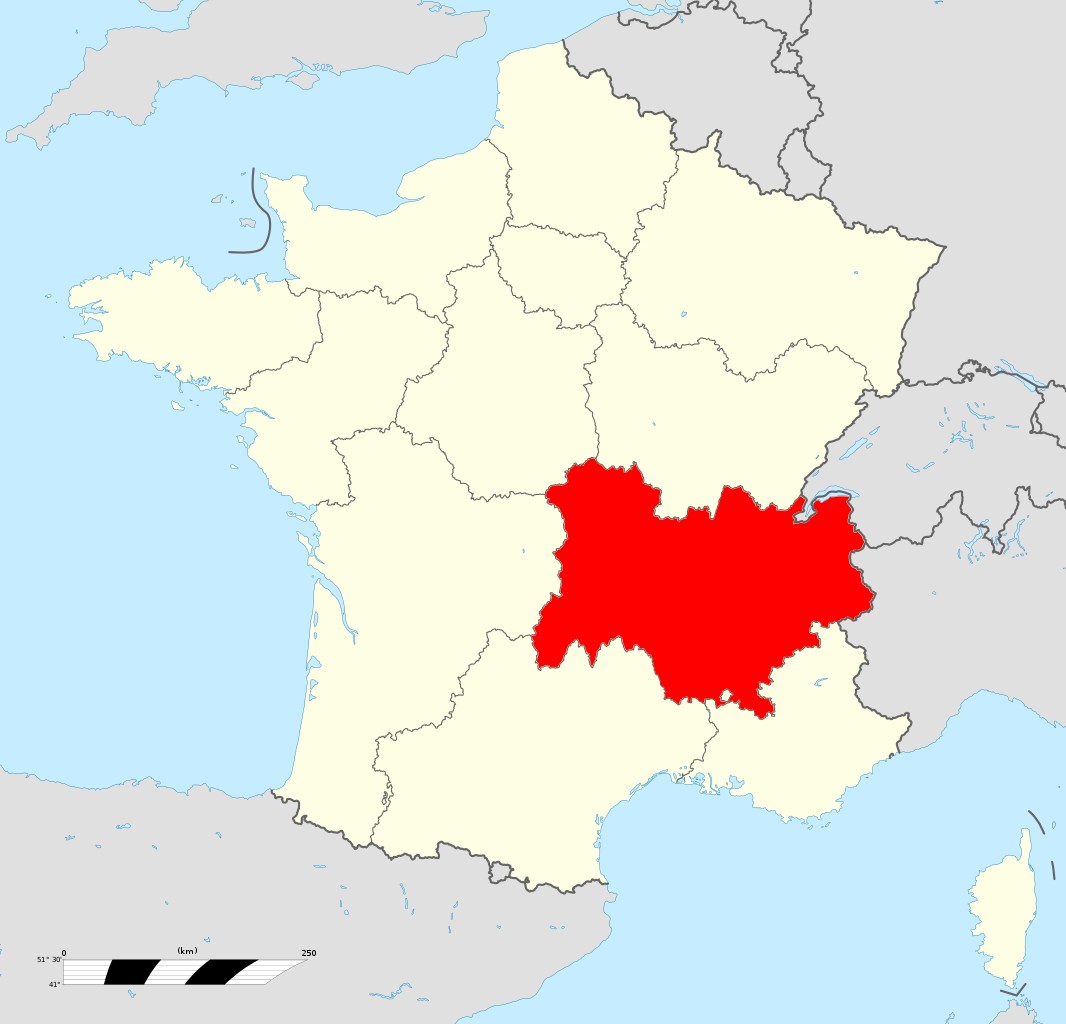
Auvergne-Rhone-Alps
Auvergne-Rhone-Alps Travel Guide.
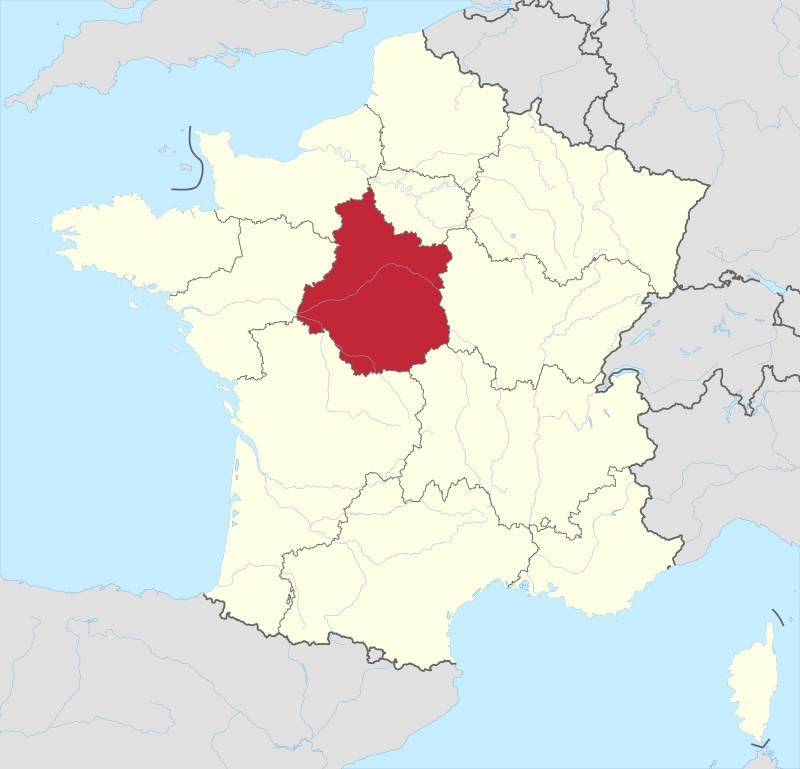
Centre Val De Loire
Centre-Val-de-Loire Travel Guide.
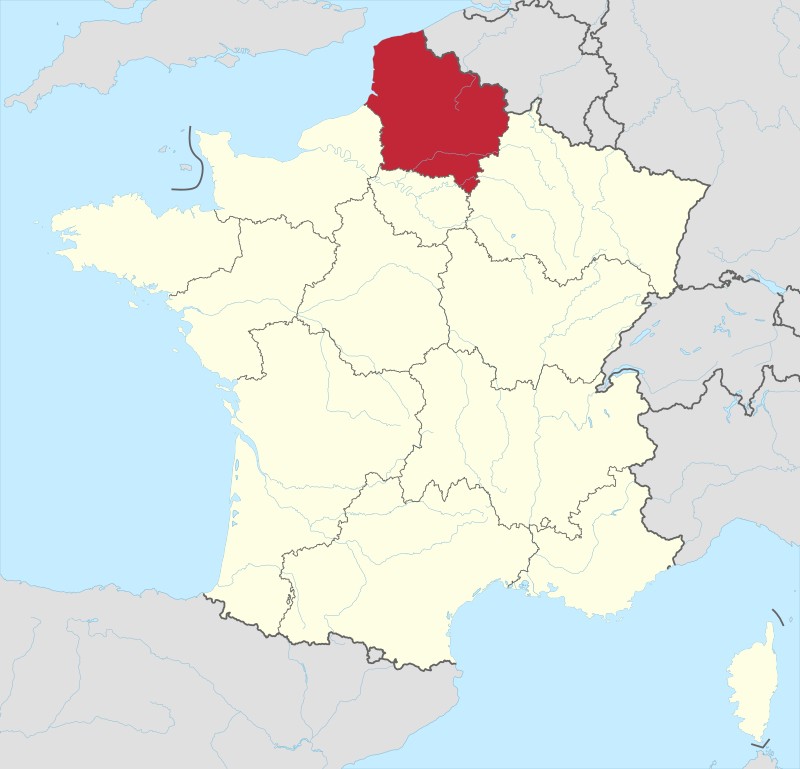
Haute – de – France
Haute-de-France Travel Guide.
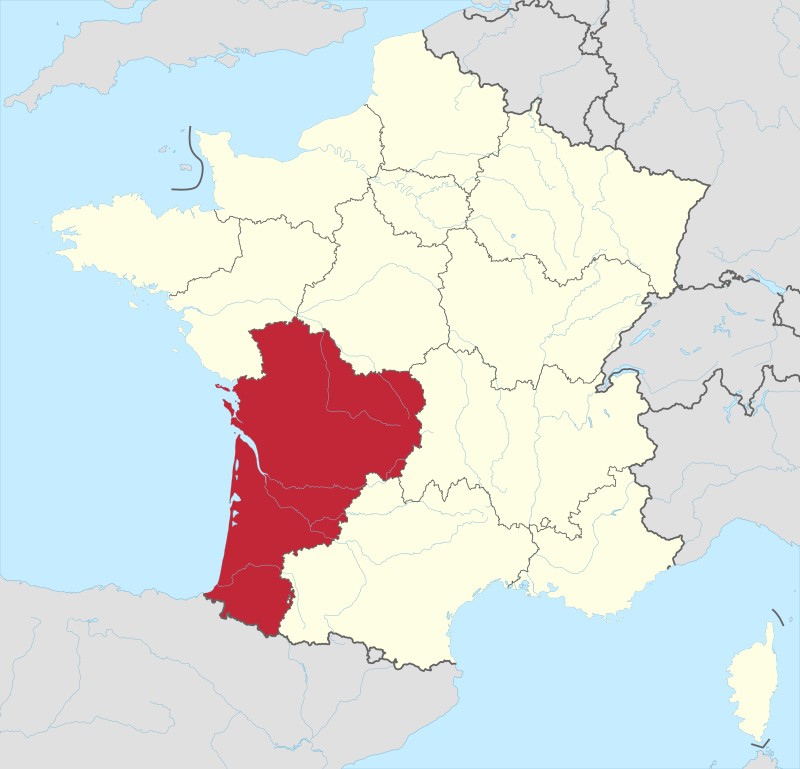
Nouvelle – Aquitaine
Nouvelle – Aquitaine Travel Guide.

Provence-Alps_Cote D'Azur
Provence Travel Guide.
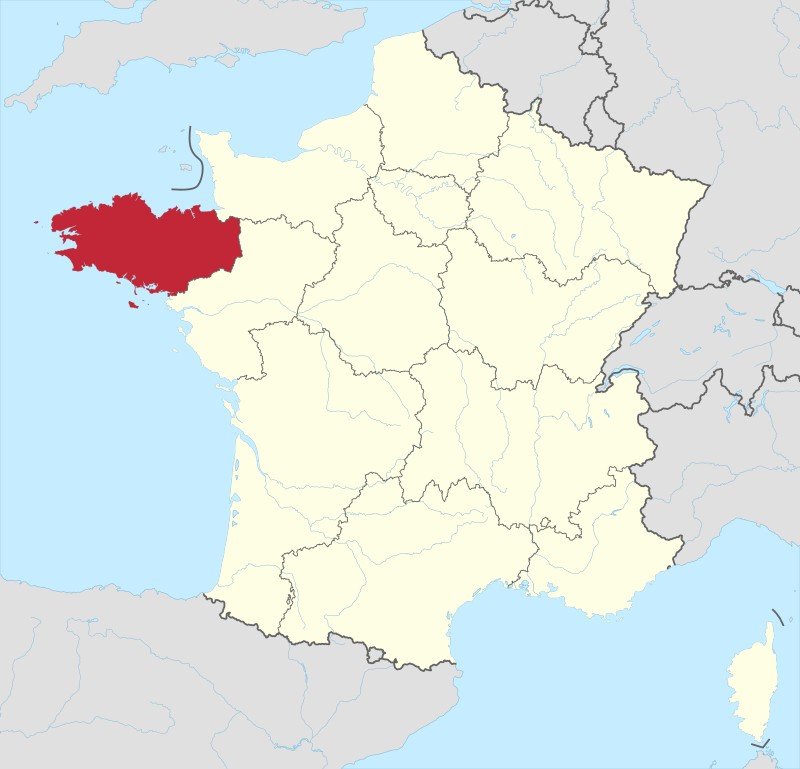
Brittany
Brittany (Bretagne) Travel Guide.
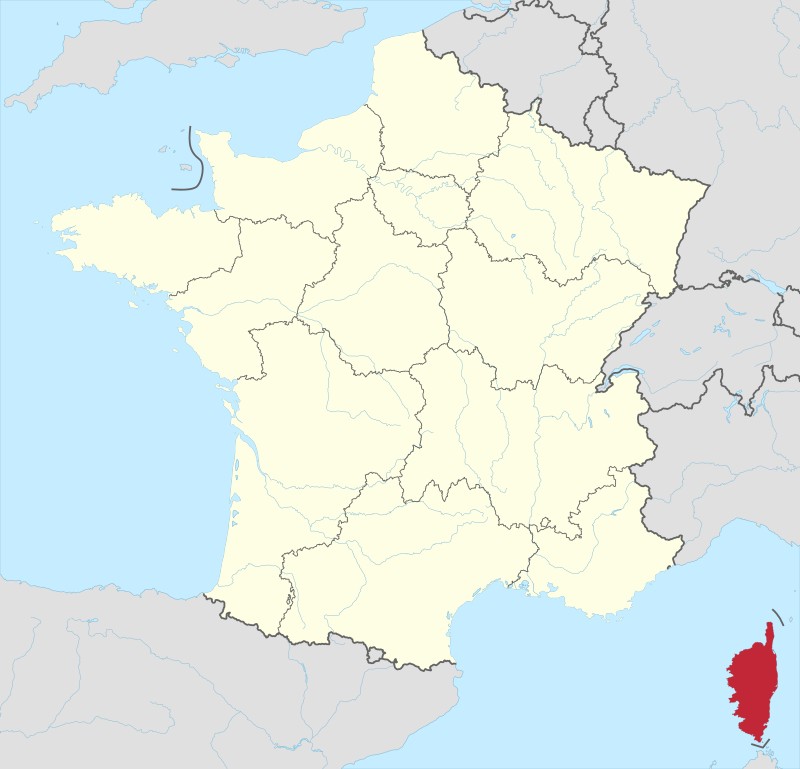
Corsica
Corsica Travel Guide.
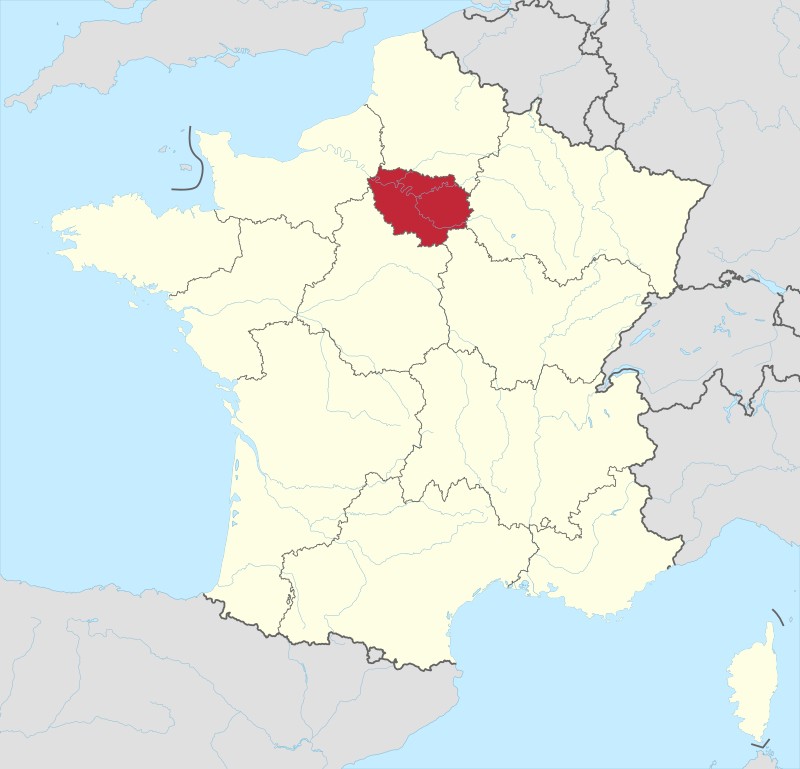
Ile – de – France
Ile – de – France Travel Guide.

Occitane
Occitane Travel Guide.

Bourgogne-Franche-Comté
Bourgogne-Franche-Comté Travel Guide.
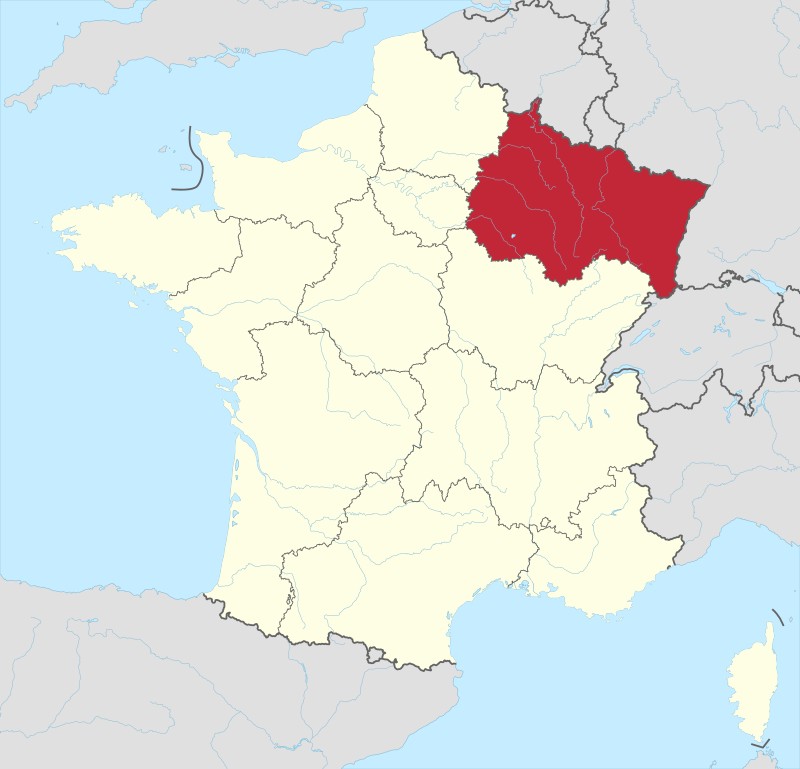
Grand Est
Grand-Est Travel Guide.
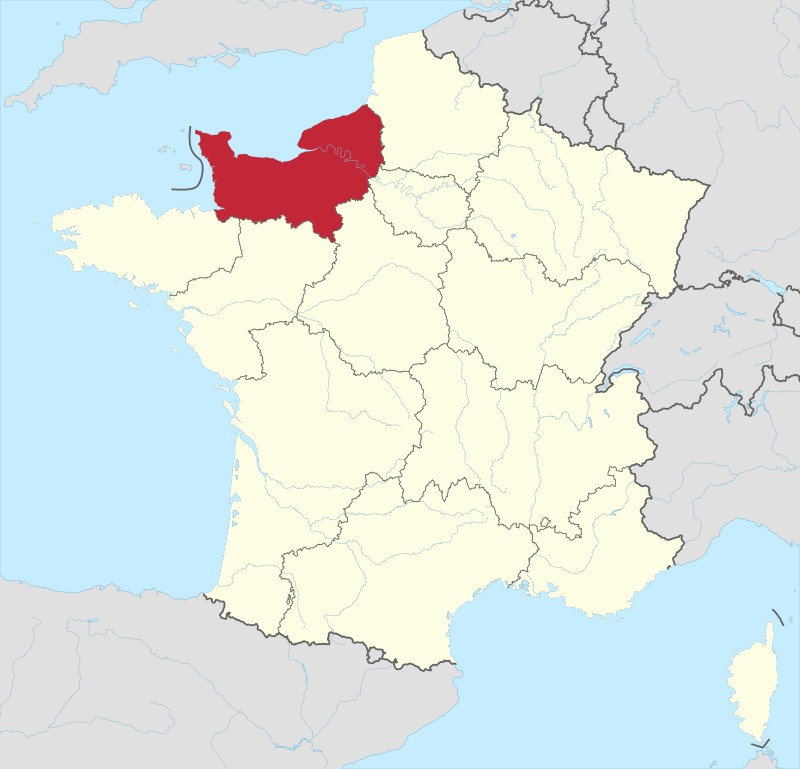
Normandy
Normandy Travel Guide.

Pays-de-la-Loire
Pays-de-la-Loire Travel Guide.

